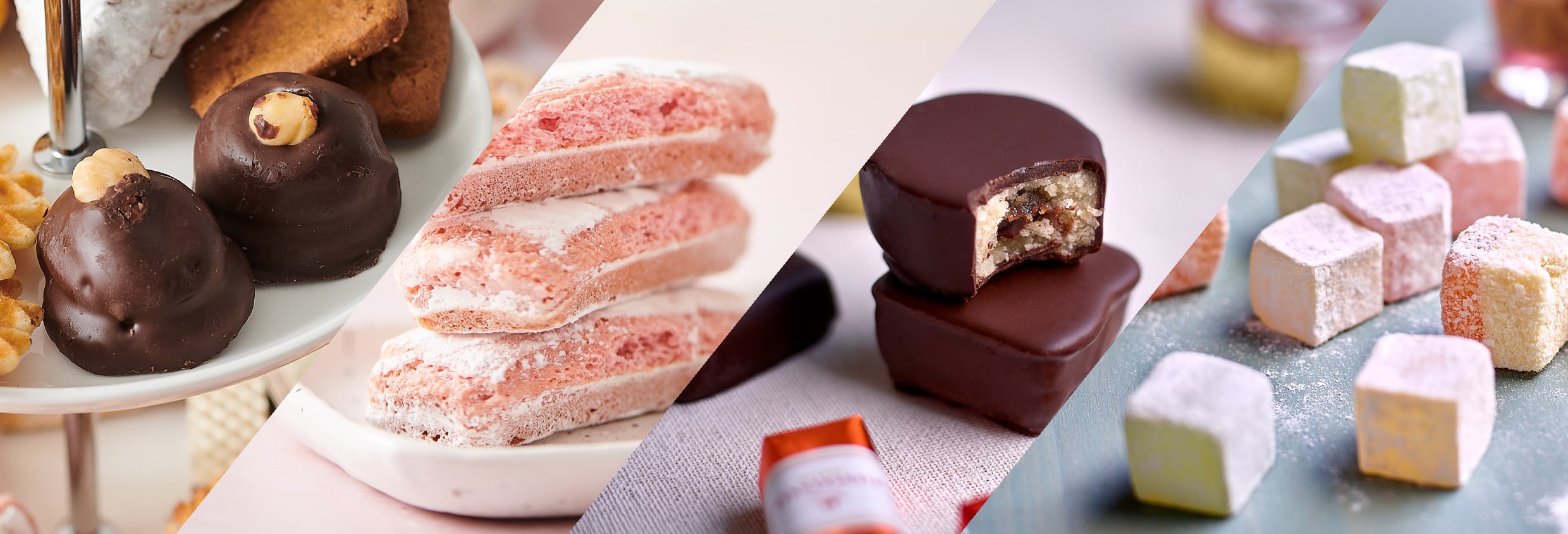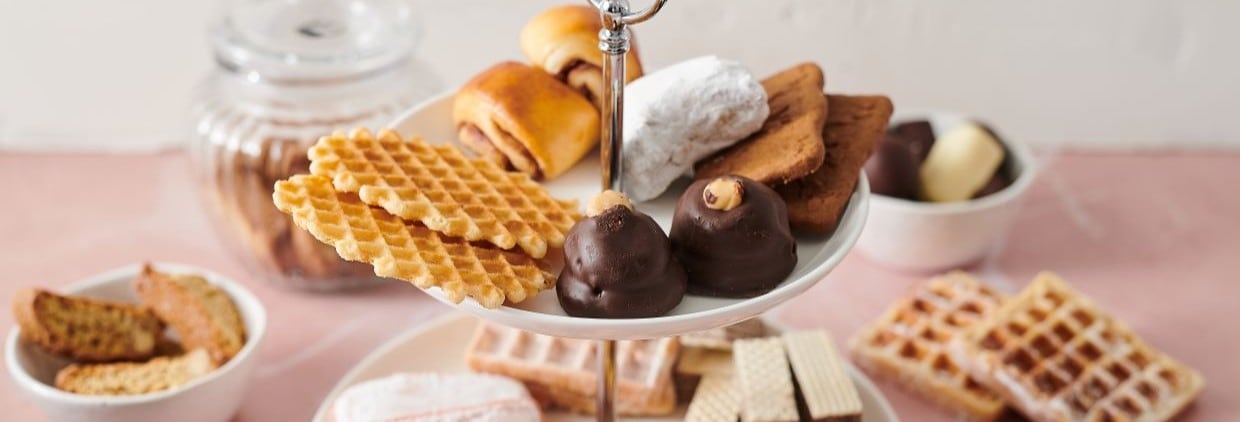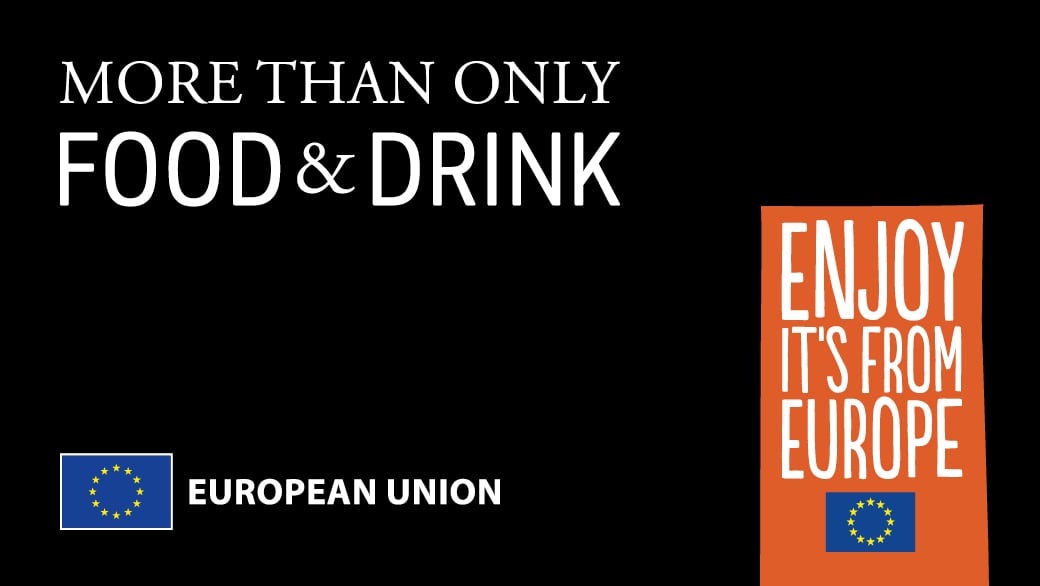The EU has a rich heritage in confectionery tradition and innovation.
This ranges from French pralines, believed to have been created in the 17th century, and gummy bears, invented more than 100 years ago in Germany, to Austrian chocolatiers which were awarded UNESCO status in 2022.¹⁻³
Some confectionery products are so important to their place of origin that they have been recognized with EU protected status – Protected Designation of Origin (PDO) and Protected Geographical Indication (PGI).
Liquorice, a sweet root found in Europe, the Middle East and South Asia, has been used to alleviate sugar cravings and medical conditions since ancient times. Calabria is the source of 80% of Italy’s liquorice. In 2011, Liquirizia di Calabria was granted a PDO designation. It is used in both traditional and modern confectionery and in herbal remedies.⁴
Äkta Gränna Polkagrisar (peppermint-flavored candy sticks) from the small town of Gränna in Sweden were granted protected PGI status in 2022. The red and white sticks were first invented by a widow in 1859 who was later given permission to start a confectionery business in order to support her family.
Bergamotes de Nancy are small, square-shaped, hard boiled sweets that were awarded PGI status in 1996. They are made from sugar and bergamot oil, and in order to qualify for PGI status, they must not contain artificial colors of flavors.
Turrón (a very sweet nougat made with honey, sugar, egg whites and toasted almonds) is a much loved treat for many Spanish people during the Christmas season. One of the most popular varieties is Turrón de Alicante – a hard and crunchy nougat containing whole almonds that was also recognised with PGI status in 1996.
Premiumization of confectionery market
The EU confectionery market is predicted to be worth €83.84bn by 2030, indicating its continued importance as an industry.⁵
“The EU has long strived to maintain its artisanal roots while scaling production for a larger consumer base. This has involved increasing cocoa content, ethical sourcing and developing hand-crafted items in response to the confectionery market’s premiumization,” says Simon Atkins, advisor to the EU’s ‘More Than Only Food & Drink’ campaign.
An important aspect of this premiumization is rising market demand for artisanal and premium chocolates, with a significant trend toward chocolate goods of greater quality and refinement.⁶ The EU chocolate market was valued at €47.3bn in 2024, accounting for 43% of global value share.⁷
“European chocolate, such as Cioccolato di Modica PGI from Italy, is widely respected for its quality and ethical standards. In addition to higher welfare for farmers and a minimum cocoa content within products, EU producers are driving new flavor trends,” adds Atkins.
“Blonde chocolate, already popular in France, is hitting the shelves now, as are the nougat blends developed in Germany and Italy, both of which are expected to be part of this year’s seasonal indulgence.”
Beyond chocolate, seasonal flavors will continue to influence confectionery as we approach the festive period. Sophisticated combinations, such as spiced orange and fig nougat, are anticipated to emerge at the higher end of the market, while the appeal of pistachio is expected to remain strong.
A growing appetite for premium and artisanal products is also driving the popularity of marzipan – a dessert synonymous with celebrations, especially Lübecker Marzipan PGI from Germany. Over the last five years, the demand for high-quality, handcrafted sweets increased by about 8% per year with EU marzipan sales expected to be worth €480mn by 2030.⁸
Wellness trends drive functional F&B innovation
Whilst there will be plenty of indulgent options available for the Christmas and Easter celebrations, the wellbeing movement also continues to drive innovation. The functional F&B market is worth an estimated €338bn and is growing at a CAGR of 10.33%.⁹ The confectionery industry is already responding to this trend by reducing sugar content and introducing ingredients considered to have health benefits.
“As the EU works to meet its sustainability goals and improve the health of its population, significant innovation is underway to remove palm oil and ingredients that have a high environmental impact,” says Atkins.
“Moreover, vegan and dairy free sweets are now commonplace in the UK, and the ability to deliver taste and texture similar to their dairy counterparts has been driven by EU artisan manufacturers. Examples include vegan pralines, made using nut butters and gelatin-free gummies, which have been popular in the EU for many years.”
“There is a role for functional confectionery to play as consumers seek out convenient ways to fuel their busy, active lifestyles. EU brands have pioneered much of the innovation behind high energy and protein bars, as well as protein jellies, and it’s a sector that has huge potential,” adds Atkins.
To meet demands for tradition, indulgence and high protein products – it is well worth looking to EU manufacturers for inspiration. Not only does production within the EU guarantee the highest quality standards, but food safety is also paramount.
Artificial additives, flavorings and enzymes are strictly controlled in the EU, and all products must indicate the presence of the 14 common allergens.¹⁰ When it comes to finding the sweet spot, the EU confectionery market has retailers covered.
For further queries, visit ‘More Than Only Food & Drink – UK’ here, or contact morethanfood_UK@agripromotion.eu.
References
- Embassy Chocolate. The Sweet and Interesting History of Chocolate Praline.
- Smithsonian magazine. The Colorful History of Haribo Goldbears, the World’s First Gummy Bears.
- The Mayor. Austrian chocolatiers get UNESCO heritage label.
- Arte Cibo. Liquorice Of Calabria: A Look At Its “Roots”.
- Mordor Intelligence. Europe Confectionery Market Size.
- Persistence Market Research. Chocolate Confectionery Market.
- CBI. What is the demand for cocoa on the European market?
- Market Data Forecast. European Marzipan Market.
- FoodNavigator. Taste trumps all in functional food and beverage.
- European Union. Food labelling rules.




